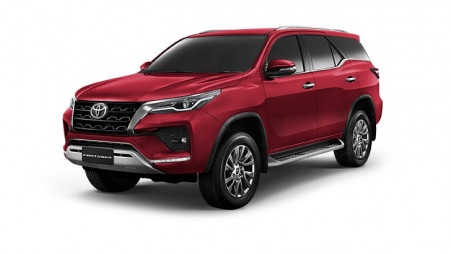

**Pakistan’s Transforming Automobile Market: A Transition from SUVs to Pickup Trucks**
In recent years, the automotive sector in Pakistan has experienced a significant transformation. Previously characterized by compact sedans and, more recently, sport utility vehicles (SUVs), the market is now undergoing an increasing shift towards pickup trucks. This change reflects evolving consumer preferences, economic factors, and broader trends in utility and lifestyle demands. As the country advances its infrastructure and strengthens its industrial framework, the pickup truck is establishing itself as a multifunctional and growingly favored option among Pakistani consumers.
### The Surge and Stabilization of SUVs
The surge in SUV popularity in Pakistan took off notably in the mid-2010s, driven by the entry of new players into the market after the Auto Development Policy 2016-21 was implemented. This policy stimulated foreign investment and enabled several new automakers, including Kia, Hyundai, MG, and Changan, to establish operations in Pakistan. These companies rolled out an array of SUVs that attracted middle- and upper-middle-class buyers seeking style, comfort, and visibility on the road.
SUVs such as the Kia Sportage, Hyundai Tucson, and MG HS quickly garnered attention due to their contemporary features, competitive pricing (in comparison to imported alternatives), and perceived status. However, as inflation escalated and fuel costs soared, the expense of owning and maintaining an SUV posed challenges for many buyers. Additionally, the weakening of the Pakistani rupee and import limitations impacted the availability and affordability of these vehicles.
### The Rise of Pickup Trucks
In light of these obstacles, pickup trucks have started to gain ground in the Pakistani market. Historically linked to commercial use and rural locales, pickups are now being redefined as versatile vehicles fit for both work and leisure. This change is driven by several significant factors:
1. **Utility and Flexibility**: Pickup trucks provide a unique combination of passenger comfort and cargo capacity. For small business proprietors, farmers, and contractors, pickups are practical vehicles that meet both personal and professional demands.
2. **Enhanced Design and Features**: Contemporary pickups such as the Toyota Hilux Revo, Isuzu D-Max, and Changan Hunter come equipped with modern safety features, comfortable interiors, and formidable off-road capabilities. These advancements have made pickups more attractive to urban consumers who appreciate both functionality and design.
3. **Lifestyle Appeal**: Worldwide, pickups are viewed as symbols of adventure and outdoor living. This notion is gradually gaining traction in Pakistan, particularly among younger consumers and outdoor aficionados who perceive pickups as emblems of freedom and toughness.
4. **Economic Factors**: In a context of high inflation, consumers are increasingly searching for vehicles that deliver long-term value. Pickups, known for their durability and lower maintenance expenses (when compared to some SUVs), are recognized as a more economical option over time.
### Government Policies and Local Production
The Pakistani government has also contributed significantly to shaping the automotive market. The Auto Industry Development and Export Policy (AIDEP) 2021-26 seeks to promote localization and decrease dependency on imports. This has motivated automakers to invest in domestic assembly of pickup trucks, making them more affordable and accessible.
For example, Master Motors has collaborated with Changan to locally assemble the Changan Hunter, while Ghandhara Industries continues to manufacture the Isuzu D-Max in Pakistan. These initiatives not only help cut costs but also create jobs and strengthen the local supply chain.
### Anticipated Challenges
Despite the rising favor for pickup trucks, the segment still confronts obstacles. High registration fees, restricted financing options, and a lack of awareness among urban consumers may hinder widespread adoption. Furthermore, the perception of pickups as solely commercial vehicles needs to evolve further to attract a wider customer demographic.
Additionally, the auto industry overall continues to deal with macroeconomic volatility, including currency fluctuations, import restrictions, and inconsistent policy enforcement. These elements can influence production, pricing, and consumer confidence.
### Future Prospects
As the auto market in Pakistan develops, the transition from SUVs to pickup trucks represents a broader trend towards practicality, durability, and value. While SUVs will likely maintain their appeal among certain demographics, pickups are set to establish a significant foothold, especially as manufacturers persist in innovating and catering to local demands.
With ongoing investments in local production, supportive government initiatives, and rising consumer engagement, pickup trucks may emerge as the new emblem of mobility in Pakistan—bridging the divide between utility and lifestyle in an ever-evolving automotive landscape.






